Droste Effect / Pizza Box presents: Pizzemblage

Droste Effect | Pizza Box presents: Pizzemblage.
Clockwise starting from the “Banana” slice: contributions by Jebila Okongwu, Alessandro Roma, Robert Melee, Ludovica Gioscia, Jesse Darling, Sarah Baker.
Photo credit: Alastair Strong
VERSIONE IN ITALIANO IN FONDO
When Droste Effect was born, all the team was asking themselves a number of questions, that overlapped to merely practical matters. We were trying to face economic issues, to give shape and style to our magazine, but above all we were attempting to put together an idea that could go beyond that of developing a contemporary art magazine. We seemed to be obsessed by format, and after a first attempt, resulting in a limited-edition publication featuring site-specific content, we realized we could try different modalities.
In 2014 we therefore started to think about publishing productions in the shape of unconventional containers. With that idea in mind, we tried to envision different interesting possibilities and perspectives we wanted to give an outline to. When we came up with our first Piazza Boxes, we were happy we had found a container that was capable of organizing, regulating and in some cases even making sense of the entropy embedded in our thoughts about art.
Like every other project, Pizza Box is subject to modifications – it fuels itself and is therefore bound to change. When artist Ludovica Gioscia asked us to curate her own project for Pizza Box, we felt we were ready to let that container – that had given us such great satisfaction – leave, in the certainty it would have come back as something different and fulfilling.
Ludovica Gioscia took the responsibility of curating the Pizzemblage project, by trying to turn a collective sculpture into a publishing project. Pizzemblage is an overturning of the Pizza Box initial project. With Pizzemblage, the container, that we at Droste Effect thought of as an impoverished space in which to stow “raw” material – a frail time capsule, or an unconventional chest of memorabilia – becomes something different. The Pizzemblage Box becomes a proper exhibition space. In an hypothetical comparison between the two outcomes, we could say that the Pizza Box is to the Wunderkammer as the Pizzemblage is to a Renaissance studiolo.
The value of the Pizzemblage derives from the participating artists’ work and ability to embellish a fragile exhibition space. The Pizzemblage Box holds six slices, realized by six different artists. The relation among the pieces that compose it is mostly clashing – proceeding from the determined materiality of Jesse Darling’s metal slice to Alessandro Roma’s elegant and delicate one, made in fabric, for which the artist folded one of his printed-on silks in a triangular shape. While Sarah Baker’s slice is a reference to the luxury and atmospheres of her TV mini-series “Impirioso,” and throws us inside the sordid, decadent life of an imaginary family and fashion maison, Robert Melee and Jebila Okongwu work on the concept of image. Melee violently wedges into the slice’s triangular space an enigmatic portrait, in which the geometric constraint is amplified by a bondage performed with a cord made of golden fibers. Okongwu, on the other side, resumes to one of his iconic motifs by directly referencing the colonial conflicts the artist experienced in person as he was living in Africa, Australia, the United States and Europe, and utilizes the recognizable logo that can be found on the packaging in which bananas are stowed. Ludovica Gioscia’s contribution is a plaster cast of a slice of pizza the artist has consumed at “Goppa,” the London pizzeria she usually eats at. Her plaster sculpture’s polychromy reminds of a feature of classical sculpture that got lost in time. Gioscia uses eye shadows of different colors to paint the white plaster, thus citing the dyes that the passing of time has erased from classical statues, which we find today lying – completely white – inside those institutional containers we all know as museums.
– Vincenzo Estremo
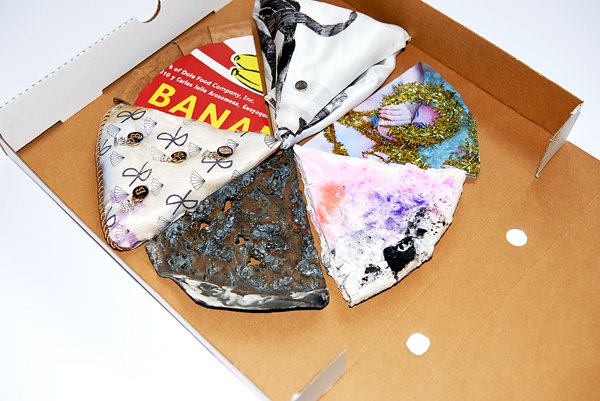
Droste Effect | Pizza Box presents: Pizzemblage.
Clockwise starting from the “Banana” slice: contributions by Jebila Okongwu, Alessandro Roma, Robert Melee, Ludovica Gioscia, Jesse Darling, Sarah Baker.
Photo credit: Alastair Strong
VERSIONE ITALIANA
Quando Droste Effect è nato, tutto il team si era posto una serie di domande che si accavallavano a questioni meramente pratiche. Si provava a fare fronte a questioni economiche, a dare forma e stile alla rivista, ma soprattutto provavamo a mettere insieme un’idea che potesse andare oltre quella del magazine d’arte contemporanea. Il formato sembrava ossessionarci e, dopo aver provato una produzione che avesse contenuti site-specific in formato standard, abbiamo capito che forse le vie da seguire potevano essere anche diverse.
Nel 2014 abbiamo così iniziato a pensare a produzioni editoriali in forma di contenitori non convenzionali. Con quell’idea provavamo ad immaginare una serie di possibilità e prospettive interessanti a cui volevamo dare uno schema. Quando abbiamo pensato ai nostri primi Pizza Box eravamo felici di aver trovato un contenitore capace di rendere sistematica, regolata e in certi casi addirittura sensata l’entropia che si nascondeva nelle nostre riflessioni sull’arte.
Come ogni progetto, anche quello dei Pizza Box si modifica, si autoalimenta e quindi finisce per cambiare. Quando l’artista Ludovica Gioscia ci ha chiesto di curare un progetto a partire dai Pizza Box, noi di Droste Effect ci siamo sentiti di lasciar partire quel contenitore che tanto ci aveva soddisfatto perché eravamo sicuri che sarebbe ritornato qualcosa di diverso e sicuramente di appagante.
Ludovica Gioscia si è fatta carico di curare il progetto Pizzemblage provando a trasformare una scultura collettiva in un progetto editoriale. Pizzemblage è un capovolgimento del progetto iniziale di Pizza Box. Con Pizzemblage il contenitore – che noi di Droste Effect avevamo pensato come uno spazio povero in cui stivare materiali “crudi”, una fragile time capsule o un inconsueto scrigno di memorabilia – diventa qualcosa di diverso. Il Box del Pizzemblage si trasforma in un vero e proprio spazio espositivo. In un ipotetico raffronto tra i due esiti, potremmo dire che il Pizza Box sta alle Wunderkammer cosí come il Pizzemblage sta agli studioli.
Il valore del Pizzemblage deriva dal lavoro e dalla capacità degli artisti coinvolti di impreziosire uno spazio espositivo fragile. All’interno del Box di Pizzemblage sono ospitate sei fette realizzate da sei artisti. La relazione tra i pezzi che vanno ad assemblare il tutto è spesso stridente. Si passa dalla materialità decisa della fetta in metallo di Jesse Darling a quella elegante e delicata in stoffa di Alessandro Roma, in cui l’artista piega una delle sue sete stampate in forma triangolare. Oppure a quella di Sarah Baker, in cui i richiami al lusso e alle atmosfere della sua miniserie TV “Impirioso” ci scaraventano nella vita sordida e decadente di un’immaginaria famiglia e maison di moda. Robert Melee e Jebila Okongwu lavorano invece sull’immagine. Melee incastra violentemente, nello spazio della fetta triangolare, un ritratto enigmatico in cui la costrizione geometrica viene amplificata dal bondage ottenuto con un cordino fatto di filamenti dorati. Okongwu invece riprende uno dei suoi motivi iconici rifacendosi esplicitamente ai nuovi conflitti coloniali che l’artista ha esperito personalmente vivendo in Africa, Australia, Stati Uniti ed Europa, e ripropone il logo riconoscibile del packaging in cui vengono stivate le banane. Il contributo di Ludovica Gioscia è un calco in gesso di una fetta di pizza che la stessa artista ha consumato da “Goppa”, la pizzeria a Londra dove è solita mangiare. La policromia della sua scultura in gesso ricorda quel lato della classicità scultoria persasi con il passare del tempo. Gioscia usa ombretti di vari colori per colorare il gesso bianco, richiamando le tinte che il passare del tempo ha cancellato dalle statue classiche, che oggi vediamo giacere totalmente bianche in quei contenitori istituzionali che tutti noi conosciamo con il nome di musei.
– Vincenzo Estremo
The Pizzemblage was exhibited at Toast: Zur Erweiterung des Buchformats [Expanding the Book Format] at Atelier Salzamt Linz from February 17 to March 4, 2016.
by Droste Effect
in Featured, Focus on Europe
Feb 5, 2015












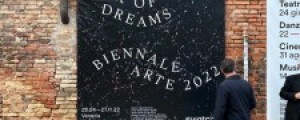
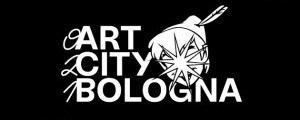

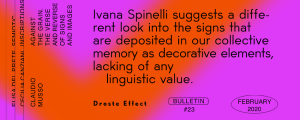
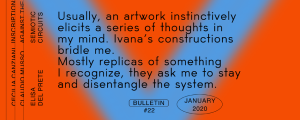

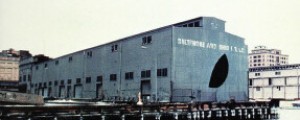






[…] shopping experience; among them, the artwork by Ludovica Gioscia, who curated and co-realized the Pizzemblage sculpture project for Droste […]
[…] Pizzemblage for Droste Effect […]
[…] Gioscia took the responsibility of curating the Pizzemblage project, by trying to turn a collective sculpture into a publishing project. Arising from Droste […]